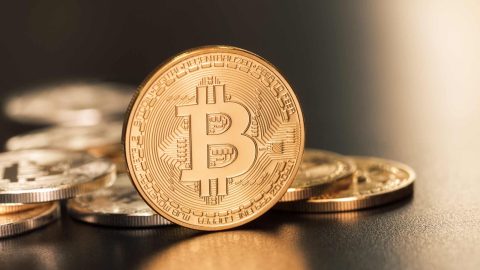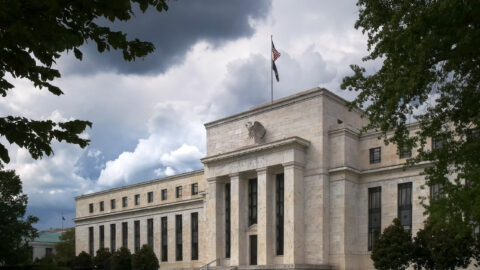What are Bitcoins?
Bitcoins were developed in 2009 as a virtual, digital currency by one person or group with the pseudonym Satoshi Nakamoto. Bitcoins are not physically tangible and are thus also difficult to grasp mentally for many.
Although Bitcoins were originally conceived as currency, more and more investors (or speculators) regard Bitcoins as an own asset class – a kind of “gold 2.0”. This is the case because, much like gold, Bitcoins are also scarce. Once all Bitcoins have been mined, a maximum of 21 million will exist.
Only the vast minority of owners use Bitcoins as a form of payment; most use them as a store of value despite their high volatility. In December 2017, the first futures contracts denominated in Bitcoins were introduced. As a result, Bitcoins have now undisputedly achieved the status of an own asset class.
What is special about the blockchain technology?
The blockchain technology is a database that does not belong to anybody, i.e. it is regarded as decentralised. Nobody (that includes governments, companies, and persons) can manipulate the data this database contains. A network of computers administers the blocks of data chains (blockchains). Blocks are generated on a continuous basis – in case of Bitcoins, about every ten minutes. In these blocks, all transactions of all kinds are stored.
The generation of blocks is similar to a competition in the network. Whoever validates transactions first and solves a mathematical problem, receives the transaction costs included therein plus new coins. Once a network participant has found a solution, other participants check it and attach it to the chain. The blockchain technology is regarded as extremely forgery-proof and flexible. Due to its special characteristics, predictions for this technology are very optimistic, regardless of whether Bitcoins will prevail or not.
The price of Bitcoins exploded last year. Is this performance a bubble?
The performance of Bitcoins is indeed breath-taking. The first opening price of Bitcoins in 2010 was 6 cents (USD 0.06). Since then, the price has on average increased by a factor of 10 every year! Of course, this lures many speculators to the table. In 2017, the performance was even above the historical average.
The term “bubble” has been in use for a while now. Whether or not an asset has created a bubble is something you only know once it has burst, but unfortunately not before that. But after such a strong performance like the one we have seen over the past months, a correction is very likely. But even if the price were to fall by 50%, the long-term trend would still be intact.
What are the risks?
Bitcoins do not represent any value per se. The value depends on whether and how many people recognise Bitcoins as an asset class, and whether they will ever be used as means of payment. Currently, less than 1% of the world population use Bitcoins.
There are numerous risks:
- Bitcoins are volatile. Their potential fluctuation exceeds that of equities by a factor of 10.
- The interest in Bitcoins can disappear overnight.
- Another cryptocurrency may take the spot of Bitcoins.
- Regulatory risks: Bitcoins can be banned locally (i.e. in certain countries). However, a global ban is unlikely.
- The mining of Bitcoins may become unattractive (i.e. offer little return), as a result of which the network might disintegrate.
- Bitcoin trading platforms have repeatedly been the target of hacker attacks.
- Many more
How can one invest in Bitcoins?
Bitcoins can be bought in various ways. The direct way requires an electronic wallet. After that, you can buy Bitcoins on a stock exchange or from a Bitcoin vending machine.
You can also invest in certificates or in an ETF. Futures contracts have been available for institutional investors since 17 December 2017 from the Chicago Mercantile Exchange.
Does Erste AM also invest in Bitcoins?
Erste AM is interested in the topic and keeps monitoring the development closely. At this point, Erste AM does not yet invest in Bitcoins.
Legal note:
Prognoses are no reliable indicator for future performance.
Legal disclaimer
This document is an advertisement. Unless indicated otherwise, source: Erste Asset Management GmbH. The language of communication of the sales offices is German and the languages of communication of the Management Company also include English.
The prospectus for UCITS funds (including any amendments) is prepared and published in accordance with the provisions of the InvFG 2011 as amended. Information for Investors pursuant to § 21 AIFMG is prepared for the alternative investment funds (AIF) administered by Erste Asset Management GmbH pursuant to the provisions of the AIFMG in conjunction with the InvFG 2011.
The currently valid versions of the prospectus, the Information for Investors pursuant to § 21 AIFMG, and the key information document can be found on the website www.erste-am.com under “Mandatory publications” and can be obtained free of charge by interested investors at the offices of the Management Company and at the offices of the depositary bank. The exact date of the most recent publication of the prospectus, the languages in which the key information document is available, and any other locations where the documents can be obtained are indicated on the website www.erste-am.com. A summary of the investor rights is available in German and English on the website www.erste-am.com/investor-rights and can also be obtained from the Management Company.
The Management Company can decide to suspend the provisions it has taken for the sale of unit certificates in other countries in accordance with the regulatory requirements.
Note: You are about to purchase a product that may be difficult to understand. We recommend that you read the indicated fund documents before making an investment decision. In addition to the locations listed above, you can obtain these documents free of charge at the offices of the referring Sparkassen bank and the offices of Erste Bank der oesterreichischen Sparkassen AG. You can also access these documents electronically at www.erste-am.com.
N.B.: The performance scenarios listed in the key information document are based on a calculation method that is specified in an EU regulation. The future market development cannot be accurately predicted. The depicted performance scenarios merely present potential earnings, but are based on the earnings in the recent past. The actual earnings may be lower than indicated. Our analyses and conclusions are general in nature and do not take into account the individual characteristics of our investors in terms of earnings, taxation, experience and knowledge, investment objective, financial position, capacity for loss, and risk tolerance.
Please note: Past performance is not a reliable indicator of the future performance of a fund. Investments in securities entail risks in addition to the opportunities presented here. The value of units and their earnings can rise and fall. Changes in exchange rates can also have a positive or negative effect on the value of an investment. For this reason, you may receive less than your originally invested amount when you redeem your units. Persons who are interested in purchasing units in investment funds are advised to read the current fund prospectus(es) and the Information for Investors pursuant to § 21 AIFMG, especially the risk notices they contain, before making an investment decision. If the fund currency is different than the investor’s home currency, changes in the relevant exchange rate can positively or negatively influence the value of the investment and the amount of the costs associated with the fund in the home currency.
We are not permitted to directly or indirectly offer, sell, transfer, or deliver this financial product to natural or legal persons whose place of residence or domicile is located in a country where this is legally prohibited. In this case, we may not provide any product information, either.
Please consult the corresponding information in the fund prospectus and the Information for Investors pursuant to § 21 AIFMG for restrictions on the sale of the fund to American or Russian citizens.
It is expressly noted that this communication does not provide any investment recommendations, but only expresses our current market assessment. Thus, this communication is not a substitute for investment advice, does not take into account the legal regulations aimed at promoting the independence of financial analyses, and is not subject to a prohibition on trading following the distribution of financial analyses.
This document does not represent a sales activity of the Management Company and therefore may not be construed as an offer for the purchase or sale of financial or investment instruments.
Erste Asset Management GmbH is affiliated with the referring Sparkassen banks and Erste Bank.
Please also read the “Information about us and our securities services” published by your bank.
Subject to misprints and errors.


